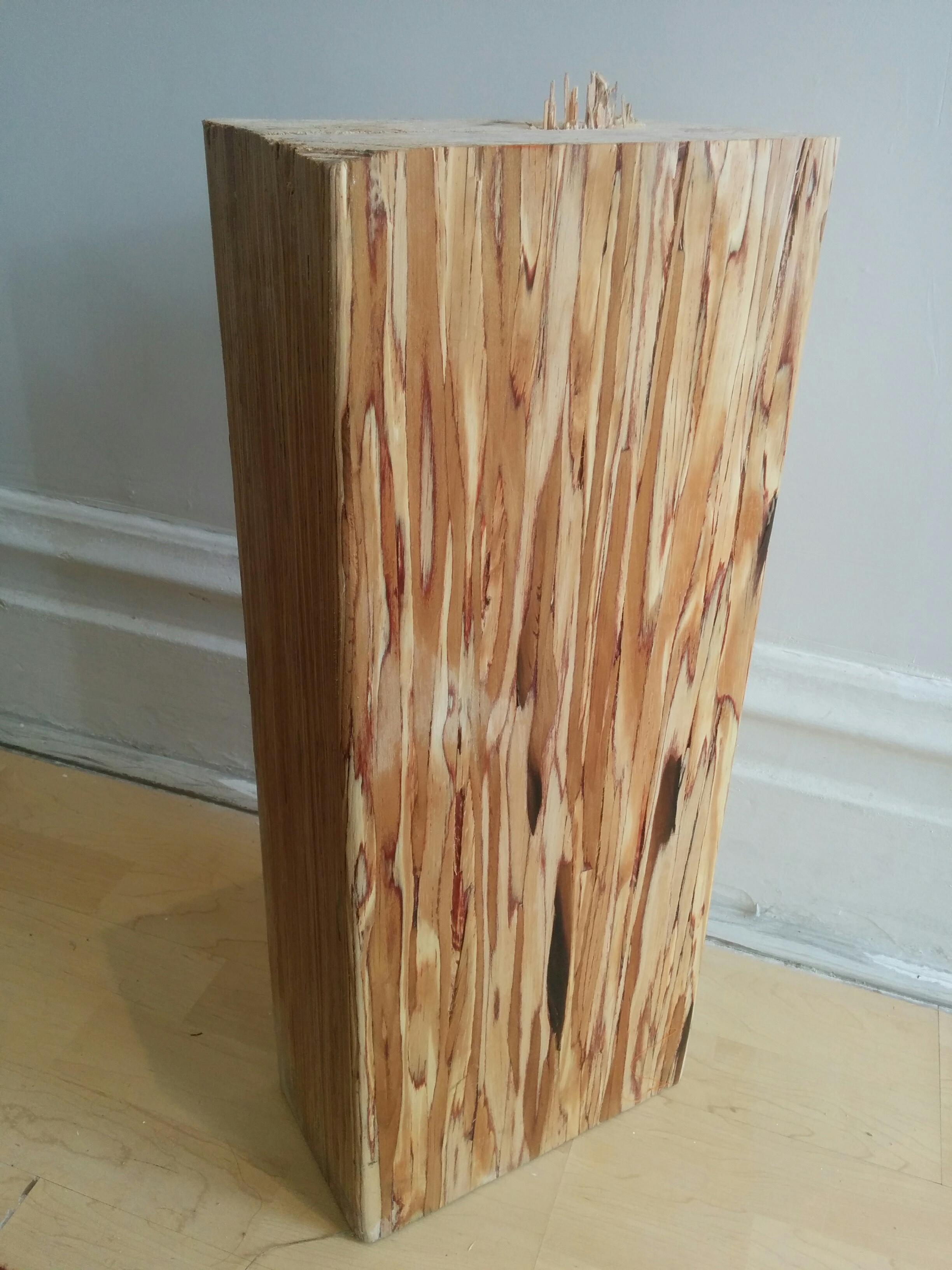Parallel-strand Lumber on:
[Wikipedia]
[Google]
[Amazon]
 Parallel-strand lumber (PSL) is a form of
Parallel-strand lumber (PSL) is a form of
File:Parallam side view.jpg, PSL grain from the side
File:Parallam support beam.jpg, A beam of PSL installed in an apartment
File:Parallam Parallel strand lumber in appartement.jpg, An apartment with an exposed PSL beam and column
 Parallel-strand lumber (PSL) is a form of
Parallel-strand lumber (PSL) is a form of engineered wood
Engineered wood, also called mass timber, composite wood, man-made wood, or manufactured board, includes a range of derivative wood products which are manufactured by binding or fixing the strands, particles, fibres, veneers, or boards of wood, ...
made from parallel wood strands bonded together with adhesive
Adhesive, also known as glue, cement, mucilage, or paste, is any non-metallic substance applied to one or both surfaces of two separate items that binds them together and resists their separation.
The use of adhesives offers certain advantage ...
. It is used for beams, headers, columns, and posts, among other uses. The strands in PSL are clipped veneer elements having a least dimension of not more than and an average length of at least 300 times this least dimension (around ). It is a member of the structural composite lumber (SCL) family of engineered wood products.
The design strength of PSL is greater than that of sawn lumber as the strands are glued together directionally and under high pressure. This results in a much denser and stronger material. Because knots and other imperfections are randomly dispersed throughout the product (and filled up and fortified with glue) strength variability from one piece of PSL to another is less than in solid-sawn wooden beams. Since wooden construction materials are commonly graded to the lowest 5th percentile of the material's strength curve, PSL has much higher usable values for bending, tension parallel to grain, and compression parallel to grain.
The invention, development, commercialisation and patent of PSL, using timber forest thinnings, dates prior to Parallam, back to the CSIRO's Division of Chemical and Wood Technology in 1976 and, since September 1977, Repco Ltd, and its subsidiary Repco Research Pty Ltd, in consultation with CSIRO.
The product was known by the name ''Scrimber'', and is described in a 1980 video produced by CSIRO during the development phase at Repco Research Pty Ltd., and the CSIRO 1986 published book ''Scrimber: A New Engineering Wood Product''. The technology licence was subsequently transferred to the then newly formed Scrimber International in 1985 Scrimber International being a joint venture between the SA Timber Corporation and the SA State Government Insurance Commission.
It is likely that the Parallam product, which uses parallel shaved veneers instead of linear crushing to form the parallel fibre structures, was developed from the technology licensed from CSIRO and commercially exploited by Scrimber International as noted in the ''Popular Mechanics'' May 1990 article pages 96–99. The history of the Scrimber patents found at Google Patents (European), was based upon the Australian Patent Priority claimed from AUPG251683, and expired in 2004,
''Parallam'' is the brand name for the product invented, developed, commercialized and patented by MacMillan Bloedel
MacMillan Bloedel Limited was a Canadian forestry company headquartered in Vancouver, British Columbia. The company was formed in 1951 as MacMillan and Bloedel through the merger of Bloedel, Stewart and Welch with the H. R. MacMillan Export Com ...
(now Weyerhaeuser
The Weyerhaeuser Company ( ) is an American timberland company which owns nearly of timberlands in the U.S., and manages an additional of timberlands under long-term licenses in Canada. The company has manufactured wood products for over a c ...
). It is the world's only commercially manufactured and marketed parallel-strand lumber product. PSL can be made from any wood species, but Douglas fir
The Douglas fir (''Pseudotsuga menziesii'') is an evergreen conifer species in the pine family, Pinaceae. It is the tallest tree in the Pinaceae family. It is native to western North America and is also known as Douglas-fir, Douglas spruce, Or ...
, southern pine, western hemlock
''Tsuga heterophylla'', the western hemlock or western hemlock-spruce, is a species of hemlock native to the northwest coast of North America, with its northwestern limit on the Kenai Peninsula, Alaska, and its southeastern limit in northern ...
, and yellow poplar
''Liriodendron tulipifera''—known as the tulip tree, American tulip tree, tulipwood, tuliptree, tulip poplar, whitewood, fiddletree, lynn-tree, hickory-poplar, and yellow-poplar—is the North American representative of the two-species genus ...
are commonly chosen because of their superior strength.
The product is manufactured as a or billet in a rectangular cross-section, which is then typically sawn and trimmed to smaller cross-sectional sizes. The beams are continuously formed, so the length of the beam is limited only to the maximum length that can be handled and transported. Typical widths are ; typical depths are . Typically the beams are made to a maximum length of .
References
{{Wood products Plywood Engineered wood MacMillan Bloedel Weyerhaeuser